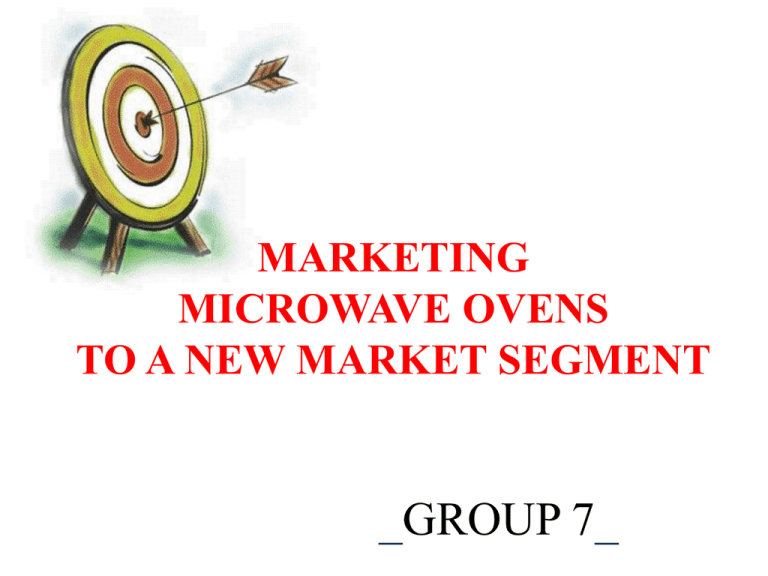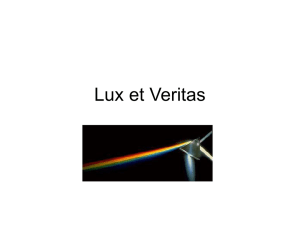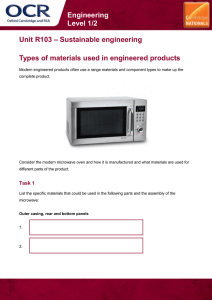_ GROUP 7 MARKETING MICROWAVE OVENS
advertisement

MARKETING MICROWAVE OVENS TO A NEW MARKET SEGMENT _GROUP 7_ Hoang Thi Ngoc Huyen M987Z239 Hyacintha FAUSTINO M997Z Krissapon Apinyaupatum M997Z241 Antun Paradzik M997Z223 Nguyen Thi Thu Trang M997Z210 Le Van M997Z246 I. INTRODUCTION II. INDIAN MARKET DATA III. INDIAN DEMOGRAPHICS IV. 4P’s IN MARKETING V. ADVANTAGES AND DISADVANTAGES VI. CONCLUSION INTRODUCTION A microwave oven is a kitchen appliance that cooks or heats food by dielectric heating The microwave oven was a by-product of another technology Cooking food with microwaves was discovered accidentally in the 1940s. Percy Spencer, a self-taught engineer, was building magnetrons for radar sets with the company Raytheon. He was working on an active radar set when he noticed that a peanut chocolate bar he had in his pocket started to melt. The radar had melted his chocolate bar with microwaves The first food to be deliberately cooked with Spencer's microwave was popcorn, and the second was an egg, which exploded in the face of one of the experimenters To verify his finding, Spencer created a high density electromagnetic field by feeding microwave power into a metal box from which it had no way to escape. When food was placed in the box with the microwave energy, the temperature of the food rose rapidly On October 8, 1945 Raytheon filed a U.S. patent for Spencer's microwave cooking process and an oven that heated food using microwave energy was placed in a Boston restaurant for testing. In 1947, the company built the Radarange, the first microwave oven in the world. Tall: 6 feet tall, weigh: 750 pounds, cost :US$5000 each & consumed: 3KW An early commercial model introduced in consumed 1600W and sold for 2,000- 3,000 USD. In 1965, Raytheon acquired Amana, which introduced the first popular home model, the countertop Radarange in 1967 at a price of US$495.. 1954, In the 1960s, Litton bought Studebaker's Franklin Manufacturing assets and developed a new configuration of the microwave, the short, wide shape that is now common and magnetron feed was also unique The new oven was shown at a trade show in Chicago, and helped begin a rapid growth of the market for home microwave ovens. Sales volume of 40,000 units for the US industry in 1970 grew to one million by 1975. Market penetration in Japan, which had learned to build less expensive units by re-engineering a cheaper magnetron, was faster. Litton was particularly well known in the restaurant business. By the late 1970s the technology had improved to the point where prices were falling rapidly. Often called "electronic ovens" in the 1960s, the name "microwave ovens" later became standardized, often now referred to informally as simply "microwaves." Formerly found only in large industrial applications, microwave ovens were increasingly becoming a standard fixture of most kitchens. The rapidly falling price of microprocessors also helped by adding electronic controls to make the ovens easier to use. By 1986, roughly 25% of households in the U.S. owned a microwave, up from only about 1% in 1971. Current estimates hold that over 90% of American households have a microwave Indian Market Data - LG is the leader of this segment Has a 33.5 % market share Eight models and price range between 8,500-19,000 Kelvinator Magicook- to expensive and not manageable to use - Adjust to the specific Indian market needs - In the long term try to change eating habits Indian Market Data Customers Still Need To Get Knowledge Of The Microwave Ovens Possibility's Future projection is positive Modern technology nowadays allowed Indian food to cook complex Some experts still think than it will take long time to overcome the problems with the indian market INDIAN DEMOGRAPHICS POPULATION • India has 2.4 % of total area of the world and being second populous country in the world in 2010 • India has population of 1.18 billion people ,which is 17.31 % of the world’s population. (estimated by April, 2010) • India is projected to be the world’s most populous country by 2025 http://en.wikipedia.org/wiki/Demographics_of_India AGE STRUCTURE • 0-14 years: • 15-64 years: • 65-over: 31.1% 63.6% 5.3% Out Target http://en.wikipedia.org/wiki/Demographics_of_India LITERACY IN INDIA • The survey in 2008 by NSSO, adult population (age 15+) had a literacy rate of 66 % • Male literacy rate is 76.9 % > Female literacy rate is 54.5 %. * (NSSO) National Sample Survey Office *When we provide the advertising, we will not focus on women (housewife) only because there high possibility of the men’s readership / circulation INDIAN FOOD / WESTERN FOOD Indian Cooking • Complex, and Take certain time of preparation • Based on spices and herbs. • Healthy Food Western Cooking • Simple and Easy to prepare • Meat and Bread • Grilling / Toaster SAMPLE WEBSITE Providing “how to” make Indian Dish through Microwave http://www.indianfoodforever.com/microwave-cooking/ PRODUCT A microwave oven is a kitchen appliance that cooks or heats food by dielectric heating. A microwave oven uses microwaves (radio waves). In 2003: The new microwave ovens on display were measured in passive standby and where applicable, off modes. Example: CM1069, INDIA''S NO. 1 MICROWAVE OVEN. Cooks Fast Real Fast. Available in 5 different Models. PRICE • The strength of microwave oven sales is attributed to the steady price reduction from Rs 7,000 for the lowest priced to Rs 5,000. • One company prices its ovens between Rs 7,000 and Rs 18,000. another between Rs 12,500 and 15,000, and an oven with grill functions goes for Rs 17,900. PLACE • The top seven cities comprise nearly 70 percent of the market with Delhi and Mumbai (Bombay) recording the highest sales. • The good news is that the microwave is beginning to be seen in smaller towns. PROMOTION 1/2 They must first sell the idea. The consumer is convinced a microwave can actually be part of daily cooking. Apart from styling and competitive pricing, marketers acknowledge that cracking the mind-set that microwaves are not suited to Indian food holds the key to future growth. There are expand the Indian market and design innovation to make the microwave suited to Indian cooking, ……..PROMOTION 2/2…….. • In local manufacturing facility promote innovation while continuing to import high end models, reduce import content to cut costs, boost volumes and bring down prices. • Promotions: giving away accessories such as glass bowls, aprons, and gloves. “To change the way you look, just change the way you cook” was a recent tagline by one of the companies. ADVANTAGES OF MICROWAVE OVEN A microwave oven has many positive features and few negative aspects as well. It depends on the usage and need of the individual to go for this type of oven. Time saving:A microwave oven has a timer which enables us to set the time for cooking food. When timer runs out, the oven turns off automatically. Different times are set to cook different types of food items. Safe to use: Everyone ca use a microwave, even a child or an old person Costefficiency on electricity ADVANTAGES OF MICROWAVE OVEN Reduce cooking odors :To get rid of the smell of food, boil the bowl of water in the oven with a few drops of lemon juice in it and your oven is ready to use again. No need to wash, justwiped off the dirt and food No need to keep an eye : Place the food, set the time, stir in between if necessary and remove the food once it is done DISADVANTAGES OF MICROWAVE OVEN Over cooking of the food Not suitable to all types of food or materials ( Iron, foil, thin plastic…) It is important to adjust the heating time as a food or product may become hot in seconds Never give the same result as a cooking oven Some people are scared because it emits waves that can be harmful if not properly sealed, but the current standards want all microwave ovens comply with strict rules of safety CONCLUSION Thanks to the advanced technology of microwave, nowadays it’s possible to cook Indian food There is a wide price range, so almost every household can own a microwave The challenge now will be: how to “Westernize” the eating habits of households India will become the world’s most populous country by 2025.



